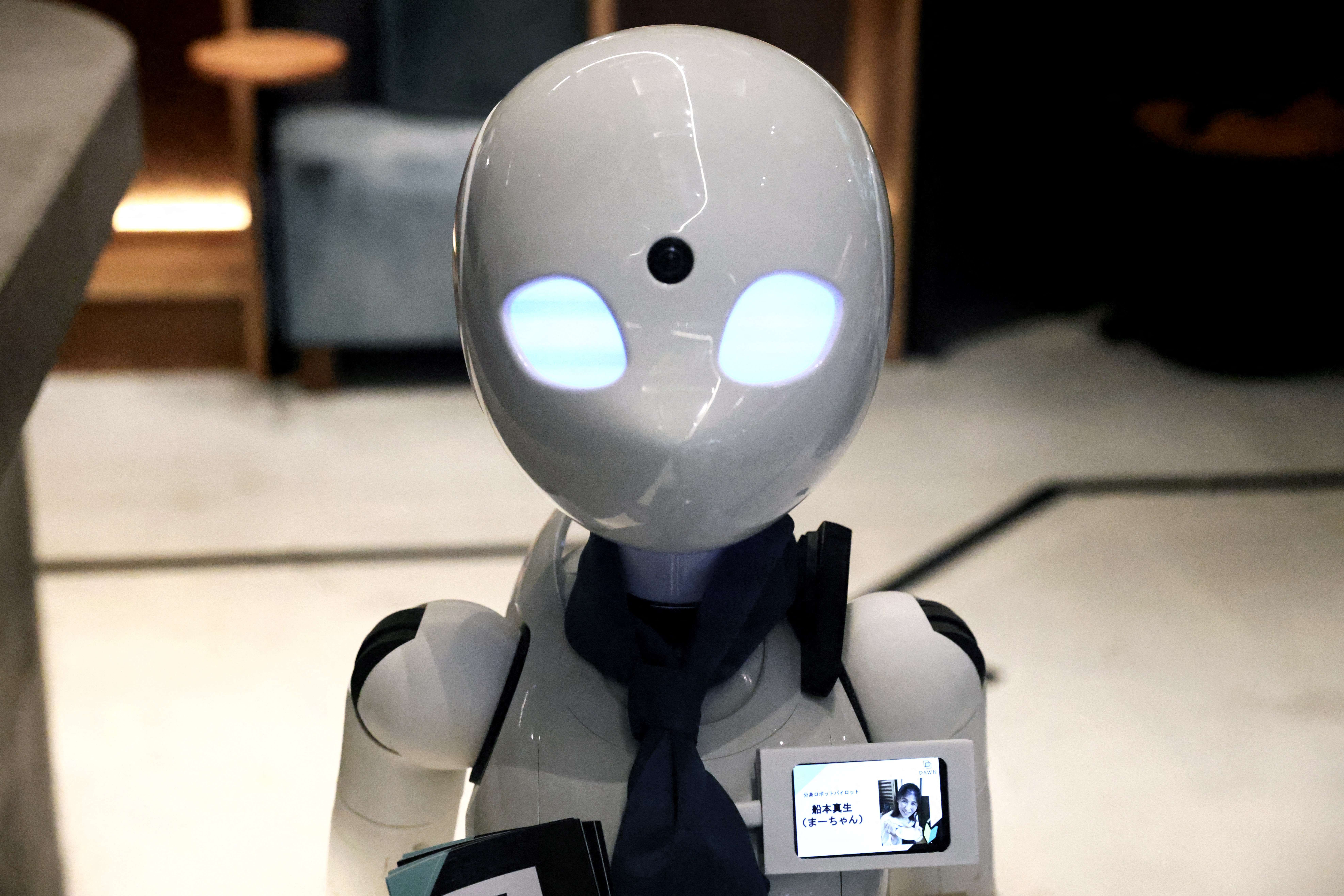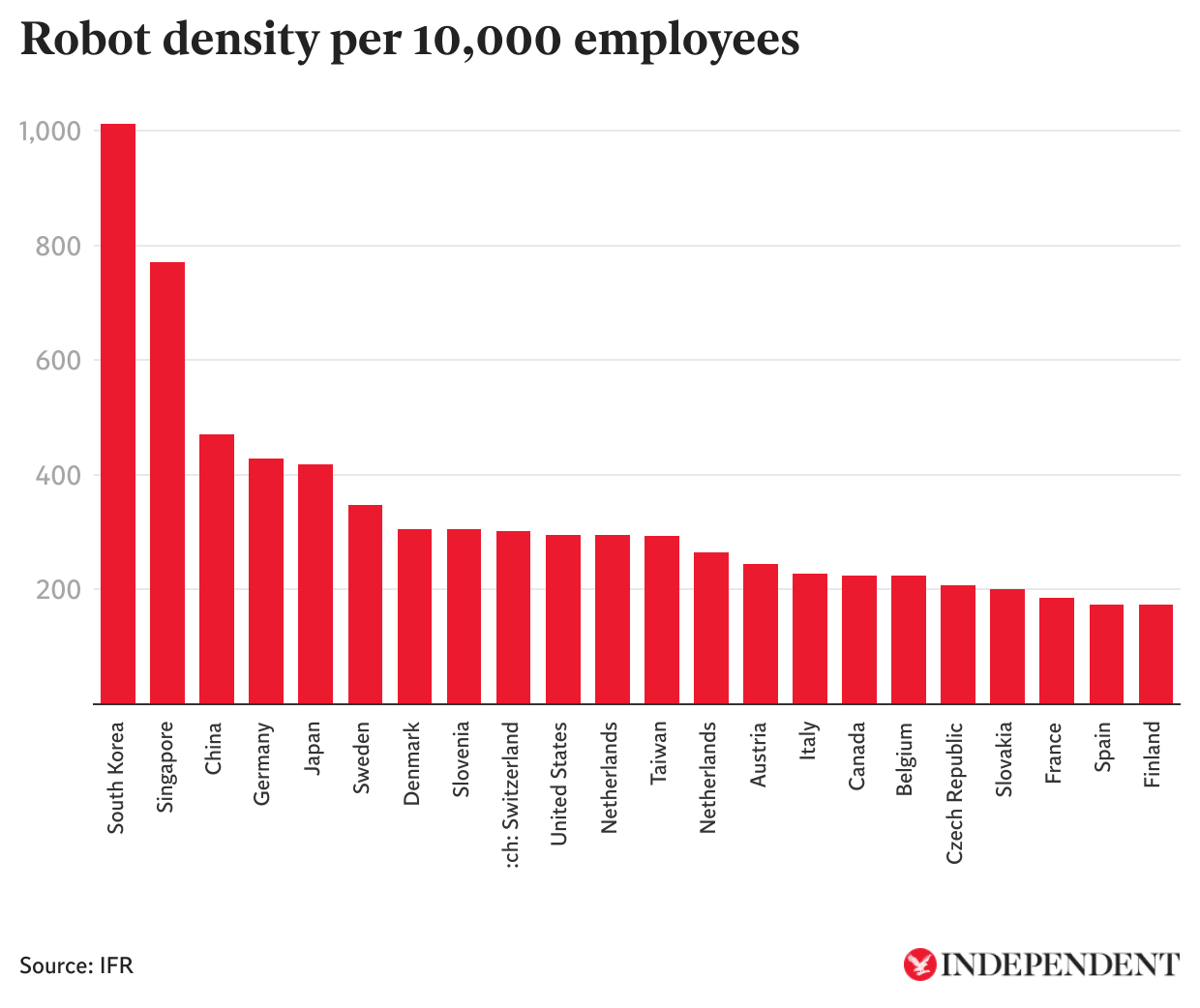A robot was found ‘dead’ at work – and no one knows why
The lives and deaths of artificially intelligent systems are posing an increasingly urgent question to the humans who live alongside them, writes Anthony Cuthbertson


Was it a misstep or a deliberate act of self-destruction? This is the question workers at Gumi City Council in South Korea asked earlier this year when one of their colleagues was found unresponsive at the bottom of a two-metre staircase.
The incident was picked up by local media, with headlines asking “Why did the diligent civil officer do it?” and “Was work too hard?”. There was also an outpouring of sympathy on social media for the stricken worker, with people’s interest piqued due to the civil servant being – in fact – a robot.
Some believe it is the first ever robot suicide – that it intentionally threw itself down the stairs after growing frustrated with its job. Witnesses reported seeing it circling in one spot shortly before the fall, which led to speculation that it was suffering an emotional breakdown.
But in order to deliberately kill itself, the robot would first need to be sentient. It is an idea that has been a trope of science fiction for more than a century, but only in recent decades have technologists and philosophers begun to seriously speculate on when and how this might actually unfold.
Jonathan Birch, a professor of philosophy at LSE and author of The Edge of Sentience: Risk and Precaution in Humans, Other Animals, and AI, believes that we will very soon see what he calls “ambiguously sentient” AI.
“By ‘ambiguously sentient’, I mean that some people will be absolutely convinced that their AI companion is a sentient being with a rich inner life, and will be angered when others deny this,” he tells The Independent. “Meanwhile, others will be equally convinced that these AI companions feel absolutely nothing.
“It won’t be possible to tell who is right because our scientific understanding of sentience is not yet mature enough for that. And this has the potential to lead to very serious social divisions.”
To prepare for such an eventuality, Professor Birch has been calling on tech companies to acknowledge the risk and to support research aimed at improving our scientific understanding.
The debate that arose in South Korea following the robot worker’s demise centred on the integration of AI and machines into human workplaces, and whether they should be given similar rights as their flesh and blood colleagues.
The questions have particular weight in a country where automation is happening at a faster pace than any other country on Earth. A report last month from the International Federation of Robotics (IFR) revealed that South Korea has become the first in the world to replace more than 10 per cent of its industrial workforce with robots. Only one other country has even passed 5 per cent.

Robots are finding work everywhere in Korea, from restaurant kitchens to hospital operating theatres. The Korean government sees intelligent machines as a way to address record-low birth rates and a rapidly shrinking working-age population. However, the massive influx of robots has raised new challenges about how best to treat and integrate them.
Even if they are not yet sentient and have no sense of self, many are already seeing them as some sort of semi-conscious beings that deserve a certain level of dignity. This was highlighted by the reaction to a video last year, which showed a robot abruptly collapsing to the ground while stacking boxes.

While the robot’s manufacturer said it was an ordinary malfunction, the clip gained millions of views as people speculated over whether it was, in fact, an act of defiance or exhaustion. “Stressed like the rest of us,” one person wrote, while another commented: “AI making its own decisions and I kinda like it #freewill.”
Since the incident at the city hall in South Korea, there have been numerous other incidents of robots seeming to kill themselves.
Last month, an event billed as Man vs Machine aimed to race an AI-powered car against a human driver. But the contest in Japan never happened; the robo-racer drove itself into the barrier on the way to the start line. Some spectators joked that the AI would rather spin itself out of the race than risk facing a human driver who was once dubbed “the torpedo” for his reckless driving.
As for the robot in South Korea that ended up at the bottom of a set of stairs, there is a third possibility for what happened to it. Something the municipal workers and media seemed reluctant to suggest: it may have been pushed.
The IFR’s report last week revealed that the average robot density globally has more than doubled over the last seven years. As this trend continues to accelerate in tandem with advances in artificial intelligence, we will increasingly be confronted with how best to live and work alongside our robot counterparts.
As the world’s leading robot employer, Amazon has spent more than a decade working on ways to integrate them into the workplace. With a staff of more than 750,000 machines working alongside 1.5 million human employees around the world, robots already make up a third of the retail giant’s workforce.
The firm’s first fully autonomous robot, Proteus, has been let loose on the company’s warehouses, allowed to roam around outside fenced areas that robots have previously been restricted to. This new role alongside human workers meant that a lot of consideration went into making the robot as least annoying as possible.
“We wanted to make Proteus lovable,” Julie Mitchell, a director at Amazon robotics who helped bring the machine to life, told reporters on a recent tour of one of the company’s fulfilment centres.
“A lot of research went into that … The faces, the eyes that we put on it, the noises that it makes – it is all purposely designed to make it lovable.”
As robot adoption continues to accelerate in tandem with advances in artificial intelligence, it seems we will increasingly be confronted with what it means to be a robot among humans – and vice versa. And serious ethical discussion around AI machines will inevitably expand from not just killer robots but robots killing themselves.





Join our commenting forum
Join thought-provoking conversations, follow other Independent readers and see their replies
Comments